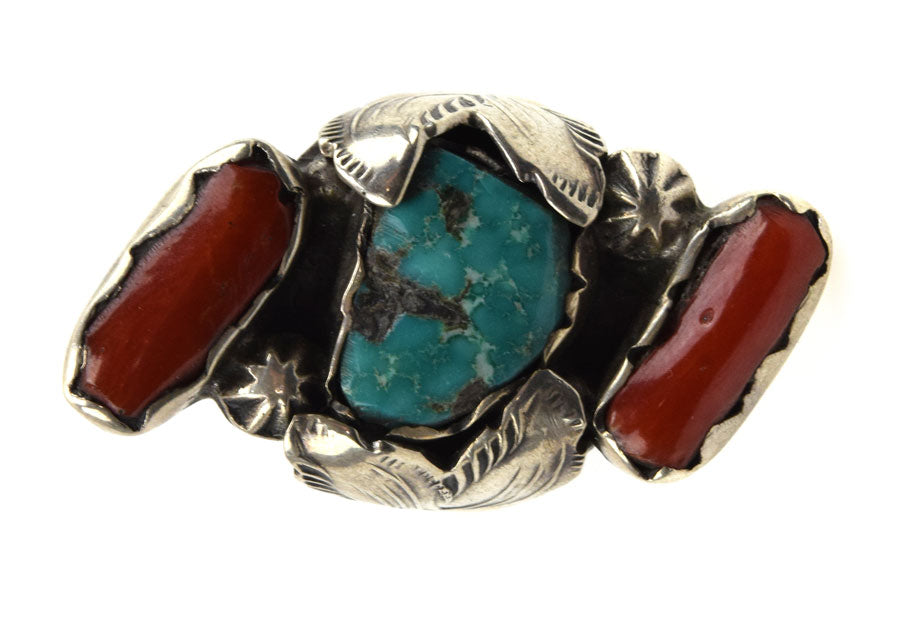
The Azure Soul of Zuni Pueblo: A Legacy Woven in Silver and Stone
In the sun-drenched landscapes of western New Mexico, nestled between ancient mesas and the expansive sky, lies the Zuni Pueblo. Home to the A:shiwi people, the Zuni are renowned globally not only for their rich cultural heritage and resilience but also for their breathtaking contributions to the world of Native American jewelry. Their artistry, particularly in silversmithing and turquoise adornment, transcends mere craftsmanship; it is a profound expression of identity, spirituality, and an unbroken lineage of skill passed down through generations.
Zuni jewelry, distinct from its Navajo or Hopi counterparts, is a vibrant symphony of blues and greens, meticulously set in silver. It is characterized by its intricate stone-on-stone techniques, where countless small, precisely cut pieces of turquoise and other stones are fitted together to form mesmerizing patterns. This “stone-in-stone” approach, often called inlay or mosaic work, is the heartbeat of Zuni artistry, demanding immense patience, an unerring eye for detail, and a deep reverence for the materials.

A History Forged in Silver and Tradition
The history of Zuni silversmithing is a relatively recent chapter in their millennia-old artistic tradition, yet it has blossomed with astonishing speed and originality. Before the arrival of the Spanish in the 16th century, Zuni artisans crafted exquisite jewelry from shell, bone, and native stones, trading their goods across vast distances. The Spanish introduced silver, but it wasn’t until the mid-19th century that silversmithing truly took root among the Pueblo peoples, largely influenced by their Navajo neighbors.
Early Zuni smiths, like Lanyade (also known as Weeha), are often credited with being among the first to learn the craft from Navajo silversmiths around the late 1800s. However, the Zuni quickly adapted and innovated, moving away from the larger, bolder silverwork of the Navajo to develop their own unique aesthetic. Their focus shifted from the silver itself to the stones, particularly turquoise, which they held in immense spiritual regard.
By the early 20th century, Zuni jewelers had begun to perfect techniques that would define their style: petit point, needlepoint, cluster work, and various forms of inlay. The advent of the railroad and the subsequent rise of tourism further fueled the demand for Native American jewelry, providing Zuni artisans with an economic lifeline and an expanded platform for their art.
The Signature Zuni Style: A Dance of Tiny Stones
What sets Zuni jewelry apart is its unparalleled focus on the stone, particularly turquoise. Unlike Navajo pieces, where silver often dominates as the canvas for stamping or repoussé, Zuni work treats silver as a delicate framework, a subtle setting that enhances and cradles the brilliant mosaic of stones.
-

Petit Point and Needlepoint: These are perhaps the most iconic Zuni styles. Petit point involves tiny, oval, round, or square-cut stones, each individually set in a minute silver bezel. Needlepoint takes this delicacy a step further, using even tinier, elongated, pointed oval stones, often resembling fine needles radiating from a central point. The precision required for these techniques is astounding, as artisans handle stones sometimes no larger than a grain of rice, shaping and polishing each one before meticulously setting it. The result is a shimmering, almost textile-like pattern of pure color.
-
Cluster Work: This style arranges numerous small, precisely cut stones around a larger central stone, creating a radiating "cluster" effect. Often seen in traditional squash blossom necklaces, bracelets, and pins, cluster work allows for a stunning display of turquoise’s varied hues, from deep blues to vibrant greens, sometimes accented with the natural brown or black matrix.
-
Channel Inlay and Mosaic Inlay: These techniques truly embody the "stone-in-stone" philosophy. In channel inlay, thin strips of silver are meticulously soldered together to create compartments or channels, which are then filled with precisely cut and polished stones. The stones are ground flush with the silver, creating a smooth, seamless surface. Mosaic inlay, a close cousin, involves fitting together irregularly shaped pieces of stone to form a picture or abstract design, sometimes without the silver channels separating them, though often with a thin silver backing. This can include figurative designs, such as the popular Zuni bird, butterfly, or multi-stone fetish figures. "It’s like painting with stone," remarked a veteran Zuni artist, describing the painstaking process of selecting and shaping each tiny fragment to fit perfectly within the design.
The Spiritual Heart: Turquoise, the Sky Stone
Turquoise is not merely a pretty gem for the Zuni; it is a sacred stone, deeply intertwined with their spiritual beliefs and daily life. Known as "chalchihuitl" in some indigenous languages, it is often referred to as the "sky stone" or "fallen sky," believed to connect the heavens and the earth. Its vibrant blue and green hues symbolize water, life, and the sky – essential elements in the arid Southwest.
For centuries, turquoise has been revered for its protective qualities, its ability to bring good fortune, and its healing properties. Zuni people have long used turquoise not just for adornment but also in ceremonies, as offerings, and as an integral part of their religious practices. The value of a piece of Zuni jewelry is not solely in its monetary worth but in the spiritual power and cultural significance imbued in each carefully placed stone.
Zuni artisans source turquoise from various mines, each offering unique characteristics. Historically, mines like Cerrillos in New Mexico were important, while in more recent times, sources like Arizona’s Sleeping Beauty (now closed, making its stone even more precious) and Kingman mines have been popular. The color, hardness, and presence of matrix (the web-like patterns of host rock within the turquoise) all contribute to the stone’s beauty and value, and Zuni artists are masters at selecting and utilizing these variations to their artistic advantage.
The Artisans: Keepers of a Living Tradition
Behind every exquisite piece of Zuni jewelry is an artisan, often one of many in a family lineage dedicated to the craft. Zuni silversmithing is largely a family affair, with skills and designs passed down from elders to children, from grandparents to grandchildren. Generations work side-by-side, sharing techniques, tools, and the quiet camaraderie of creation.
"My grandmother taught me how to cut stones when I was just a small child," recounted a Zuni elder at a recent cultural festival. "It’s not just about making jewelry; it’s about continuing our way of life, keeping our traditions alive. Each piece carries a piece of our history, our spirit." This deep personal connection to their work imbues each piece with an authenticity and soul that mass-produced imitations can never replicate.
The process is laborious and requires immense dedication. It begins with raw silver and rough turquoise. The silver is cut, hammered, and soldered to form the base and bezels. The turquoise is then carefully cut, ground, and polished, often with primitive tools, into the precise shapes needed for the intricate designs. Finally, each stone is meticulously set, a testament to hours, days, or even weeks of focused effort.
Challenges and the Future of Zuni Artistry
Despite its beauty and cultural significance, Zuni jewelry faces challenges in the modern world. Economic fluctuations, competition from mass-produced imitations (often falsely marketed as Native American-made), and the need to appeal to a broader market while maintaining traditional integrity are ongoing concerns.
The Indian Arts and Crafts Act of 1990 is a vital piece of legislation that helps protect Native American artists by making it illegal to falsely market products as "Native American-made" when they are not. Supporting authentic Zuni artists means not only preserving their cultural heritage but also ensuring their economic livelihood.
The younger generation of Zuni artists is finding innovative ways to blend tradition with contemporary aesthetics, ensuring the art form remains vibrant and relevant. They are utilizing online platforms to reach wider audiences, engaging in direct sales, and collaborating with galleries and museums to showcase their work. While embracing new technologies, the core values of precision, dedication, and respect for the materials remain paramount.
"Our art is our voice, our history, and our future," stated a Zuni tribal leader. "When you wear a piece of Zuni jewelry, you’re not just wearing an adornment; you’re wearing a story, a connection to our ancestors, and a prayer for our future."
Beyond Adornment: A Cultural Treasure
Zuni Pueblo silversmithing and turquoise jewelry are more than mere adornments; they are living testaments to an enduring culture, a deep spiritual connection to the earth, and an unwavering commitment to artistic excellence. Each tiny stone, each intricate setting, tells a story of resilience, creativity, and the profound beauty that emerges when tradition and innovation intertwine. To possess a piece of authentic Zuni jewelry is to hold a fragment of the vast, azure sky, a whisper of ancient traditions, and a tangible link to the soulful artistry of the A:shiwi people. It is a reminder that true beauty lies not just in what we see, but in the history, spirit, and dedication woven into every thread of its creation.


